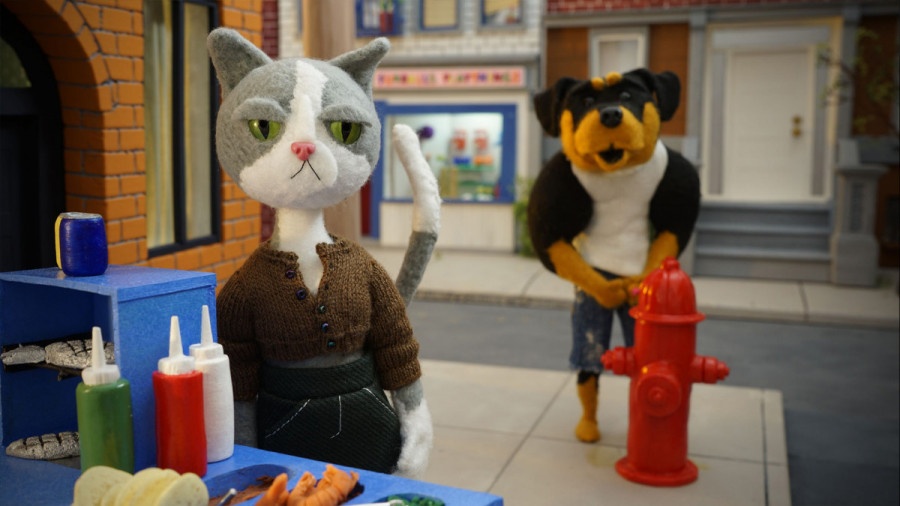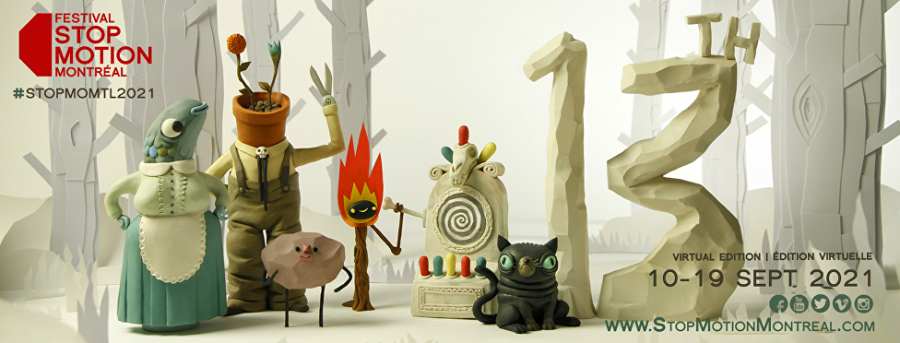This year’s Festival Stop Motion Montréal comes to a close after a successful 13th edition
Stop Motion featured 93 films from artists around the world
Festival Stop Motion Montréal spanned over 10 days, from Sept. 10 to Sept. 19, featuring a variety of animation films from comedies to political cinema, and even musicals.
It is the first ever festival in the world to be dedicated to stop motion animation, and is currently in it’s 13th year. With the circumstances of the pandemic, Festival Stop Motion Montréal was held virtually for the second year in a row, but as co-director of the festival Dominique Côté pointed out, this makes it easier for the films to connect with an international audience.
Côté first got involved with the festival as a volunteer after graduating from the animation program at Concordia. In 2014 she officially became part of the festival’s team, and mentioned most of the team are former students of Concordia University. Côté eventually went on to become co-director of the festival alongside Marie Valade.
This year's edition of Stop Motion focused on Indigenous programming. The program included a round table discussion entitled Indigenous Stop motion Productions—Voices and Images, which took place Sept. 18.
The event featured Saskatchewan-based producer Melanie Jackson, Toronto-based multidisciplinary artist Terril Calder and Zacarias Kunuk, an Inuit filmmaker known for his documentaries and live-action films. Kunuk’s first stop motion film, Angakuksajaujuq (The Shaman’s Apprentice), was featured in the festival this year. The fourth guest was Neil Christopher, who is not an Indigenous artist but works with the community to record and preserve traditional Inuit stories, and co-founded a production studio in Nunavut. The event was created as a space for discussion on Indigenous identity, tradition and culture through stop motion animation.

The festival featured a variety of other short films including Quick Fix, created by Alexandra Lemay who is a graduate from the animation program at Concordia.
Quick Fix is a three and a half minute bittersweet love story where a disposable coffee cup falls in love with it’s drinker.
“[I drew inspiration from] this kind of serial dating culture we live in, and our disposable tendencies and how those relate to one another,” said Lemay.
The visual inspiration for the style of the film, which is a mix of stop motion and live action, came from a mix of conceptual and financial reasons. Since this was Lemay’s first independent film and she wanted to finance it herself, reducing the amount of things needed to be built was a smart solution for a tighter budget.
“[I] wanted it to have a kind of personality but still feel like it belonged in the real world,” she said. Lemay went on to say she was inspired by pareidolia, which is the phenomenon of seeing faces in inanimate objects.
Lemay said there’s been a mix of emotional reactions from audiences, some describing the film as a comedy, others describing it as dark and sad. Lemay explained that overall she hopes Quick Fix helps to inspire people to make their own independent films, and reminds us that it is possible, even if it’s completely self-financed.

“The stop motion short form can be very adult oriented, and when you look at the short film or independent format, they are generally not for children,” said Côté when tackling the often preconceived notion of stop motion works. “When we go in the short film circuit, you can have all spectrums of the movie genre.”
Catcalls, co-directed by Laura Stewart and Anna Berezowsky, who are both based in Montreal, was another film featured in the festival’s program and is a two minute short about street harassment. The short takes actual quotes from incidents of street harassment in New York City and interprets them in a stop motion medium as cats being harassed by dogs on the street.
This is co-director Anna Berezowsky’s first animation film and first time being in the festival as a filmmaker, despite having volunteered before.
“There’s a lot of digital content out there and we hope that it being in stop motion makes it a little bit more unique and grabs people’s attention.” — Anna Berezowsky
“We find that the tangible nature of it, it’s very physical, it’s very raw, it’s a little rough, works very well for the subject matter and we hope that it’s a little bit different,” said Berezowksy when explaining why she chose stop motion for this subject matter. “There’s a lot of digital content out there and we hope that it being in stop motion makes it a little bit more unique and grabs people’s attention.”
Berewosky’s hope is that viewers will walk away with a better awareness of street harassment and realize these are actual words that have been spoken to women out in public.
“Set up any camera, set up your phone, and just animate anything you have. It doesn’t have to be clean, it doesn’t have to be perfect or pretty, if you get that practice in and really work at it you’ll get there.” said Berewosky when asked about her advice to students wanting to pursue stop motion. “It’s a lot of fun and you can make really interesting stuff. You just gotta focus and do it.”
Read More: Forty-eight years of movie magic from the Concordia Film Festival
Read More: “Ain’t No Time for Women” wins Best Canadian Short Documentary Award at Hot Docs


_600_832_s.png)


web_600_375_90_s_c1.jpg)
__600_375_90_s_c1.jpg)